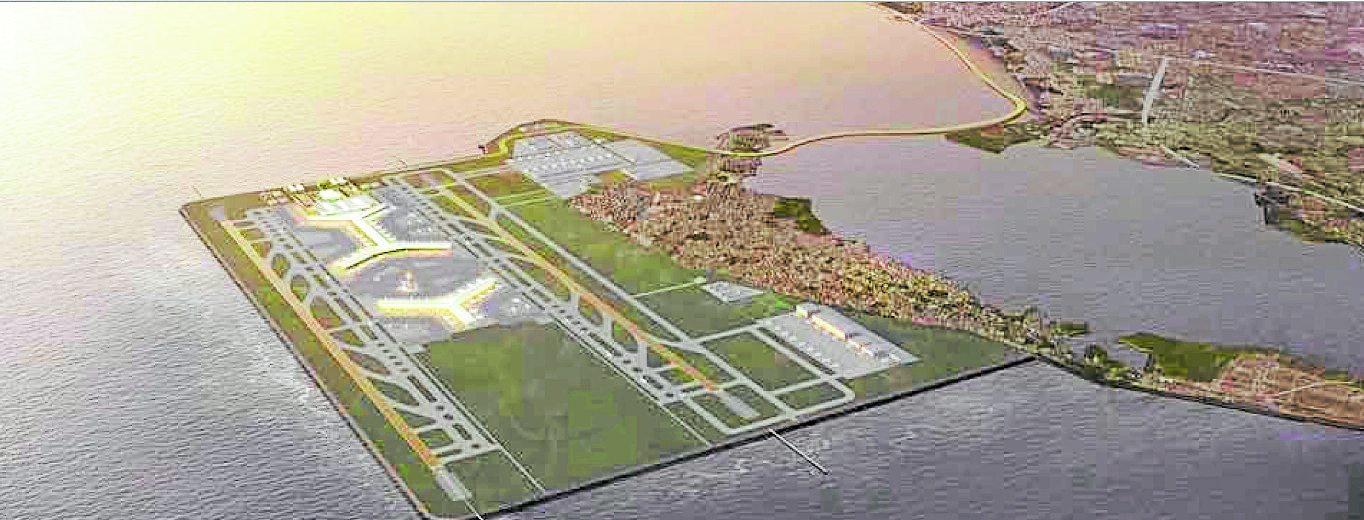
An artist’s rendition of the $10-billion Sangley Point International Airport. The Cavite government aims to proceed with the project despite a grim future the aviation world is facing. —CONTRIBUTED PHOTO
The Cavite government remains positive its $10-billion international airport project on Manila Bay will push through despite the storm clouds that have been unleashed on the global aviation sector due to the coronavirus pandemic.
Cavite Gov. Jonvic Remulla told the Inquirer the Sangley Point International Airport project would have a place in a postlockdown world.
“The country should look beyond this pandemic already. It will pass. We should be ready to take off,” Remulla said.
Through its own initiative, the local government unit awarded in February the first phase of the Sangley Point airport to a venture between state-run China Communications Construction Co. Ltd. (CCCC) and taipan Lucio Tan’s MacroAsia Corp., an aviation services company.
The goal was to ease worsening congestion in Manila’s Ninoy Aquino International Airport on the assumption air travel would continue its unstoppable growth.
Prospects have changed dramatically in the space of a few months.
Fleets around the world are grounded and demand is not expected to recover to 2019 levels in three years or more, according to the International Air Transport Association.
Local carriers, including Tan-owned Philippine Airlines, are seeking the government’s help to access emergency loans while more layoffs loom.
The Sangley Point airport and San Miguel Corp.’s $15-billion New Manila International Airport proposal in Bulacan province are among five airport “megaprojects” around the world, according to the Asian Infrastructure Investment Bank (AIIB).
“The crisis does mean the policymakers will have to reexamine the economic case for each project, especially those megaprojects being planned, and the impact on financial and debt sustainability,” the Beijing-led AIIB said in a report on April 15.
Remulla, however, said the estimated period of recovery “is in our time horizon.”
For now, it remains unclear how the CCCC-MacroAsia consortium intends to proceed with the project.
Even before the pandemic forced the widespread shutdown of aviation services in the Philippines and around the world, the company was already hoping to win financial support from other companies within Tan’s business empire, CEO Joseph Chua said on Feb. 22.
A MacroAsia official did not immediately respond to a request for comment on Monday.
The consortium has yet to submit the required postqualification documents that were originally due in March 2020, but delayed because of the health crisis, said Jesse Grepo, secretary of the Cavite government’s public-private partnership selection committee.
He said the new deadline was set on June 11 this year.
Under the original schedule, the first phase of the project involves the construction of one runway and a terminal with a capacity of 25 million passengers per year by 2023. It will eventually expand to a four-runway airport with an annual capacity of 130 million passengers. INQ